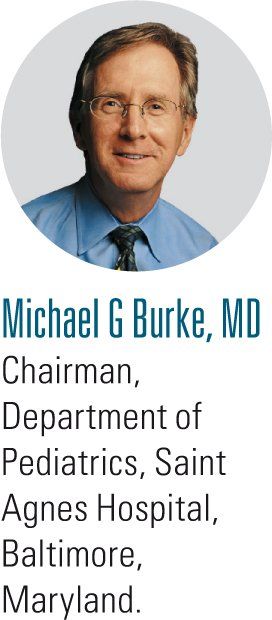Is there a better way to estimate probability of UTI in febrile infants?
Investigators compared the accuracy of an American Academy of Pediatrics (AAP) practice guideline algorithm for diagnosing of urinary tract infection (UTI) in 2- to 23-month-olds with a new tool (UTICalc; University of Pittsburgh, Pennsylvania) that first estimates UTI probability based on clinical variables and then, if laboratory testing is performed, updates the estimate based on the results.
Michael G Burke, MD

Perhaps. Investigators compared the accuracy of an American Academy of Pediatrics (AAP) practice guideline algorithm for diagnosing of urinary tract infection (UTI) in 2- to 23-month-olds with a new tool (UTICalc; University of Pittsburgh, Pennsylvania) that first estimates UTI probability based on clinical variables and then, if laboratory testing is performed, updates the estimate based on the results.
Investigators developed the tool by analyzing electronic medical records (EMRs) of 2070 febrile children aged from 2 to 23 months who were brought to an urban emergency department (ED) with a temperature of 100.4°F or higher. When the UTICalc then was applied to a hypothetical group of 1000 febrile children, it reduced testing by 8.1% and decreased the number of missed UTIs from 3 to none.
The researchers tested 5 different models of the UTICalc for predicting risk of UTI, 1 of which had only clinical variables, namely age younger than 12 months; temperature ≥102.2°F; nonblack race; female or uncircumcised male; and no other fever source. The other 4 models also incorporated a range of laboratory tests, such as leukocyte esterase and nitrite values; results of a Gram-stained urine smear; or urine white blood cell count.
The solely clinical model predicted the probability of UTI less accurately than the models that included laboratory tests. Overall, models with a Gram-stained smear performed better than those without this test. Compared with empirically treating all children with a leukocyte esterase test result of 1+ or higher, the UTICalc model that included variables from the clinical model plus leukocyte esterase and nitrite values would have reduced the number of treatment delays by 10.6%.
In using the UTICalc to decide if urine sampling is warranted in a young child with fever and a suspected UTI, the clinician first inputs data on the 5 clinical variables, and the UTICalc assigns a “low” or “high” risk. Then, if testing is performed, the clinician enters the results into UTICalc, which automatically selects the model corresponding to the test(s) and estimates the probability of UTI, again assigning a risk category (Shaikh N, et al. JAMA Pediatr. April 16, 2018. Epub ahead of print).
Thoughts from Dr. Burke
UTICalc is available free for use at https://uticalc.pitt.edu. Try it out. I find it simpler to use than the AAP guideline algorithm and, according to its creators’ analysis, it may be slightly more accurate. The authors suggest that the calculator could be built into and autopopulated by EMRs. Pretty cool!

Newsletter
Access practical, evidence-based guidance to support better care for our youngest patients. Join our email list for the latest clinical updates.